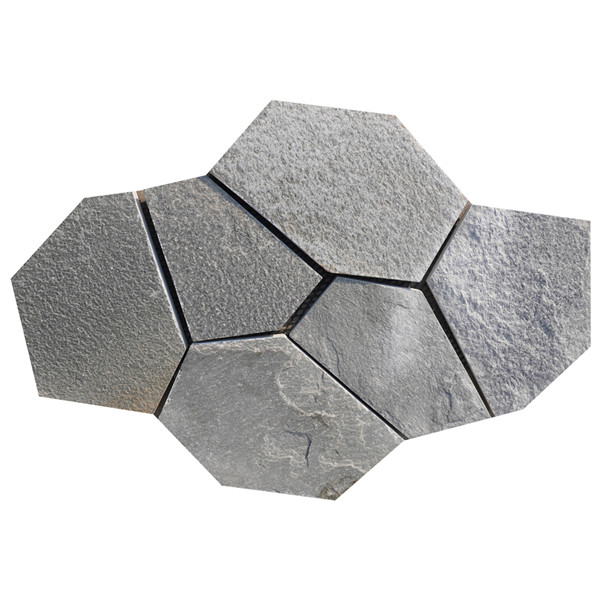Introduction:
In a world that is becoming increasingly fast-paced and chaotic, finding moments of peace and serenity has become more important than ever. One such sanctuary that offers a haven of calmness and tranquility is the Zen garden. Rooted in ancient Japanese culture, these minimalist gardens are meticulously designed to create harmony between nature and human existence. Central to the aesthetic appeal of Zen gardens is the use of stone veneer, a versatile material that adds depth, texture, and a sense of timelessness to these serene spaces. In How to clean and seal cultured stone , we will delve into the art of Zen garden stone veneer, exploring its history, significance, and various applications, as well as its ability to evoke a sense of peace and contemplation.
Section 1: A Brief History of Zen Gardens
To truly appreciate the significance of stone veneer in Zen gardens, it is necessary to understand the origins and evolution of these tranquil spaces. Zen gardens, also known as Japanese rock gardens or dry landscapes, emerged during the Muromachi period (1336-1573) in Japan. Initially influenced by Chinese gardens, Zen gardens became an integral part of Zen Buddhist monasteries as a means to facilitate meditation and reflection.
Historically, Zen gardens were created as miniature landscapes, meticulously designed to represent larger natural scenes. The purpose was to evoke a sense of tranquility and harmony, allowing individuals to detach from worldly concerns and connect with their inner selves. Over time, Zen gardens evolved to incorporate various elements, including water features, bridges, and, most notably, stone arrangements.
Section 2: The Significance of Stone in Zen Gardens
2.1 Symbolism and Philosophical Significance
In Zen philosophy, stones hold profound symbolic meaning. They are believed to represent different aspects of nature, such as islands, mountains, or the entire cosmos. Stones in Zen gardens are carefully placed to create a sense of balance and harmony, reflecting the belief in the interconnectedness of all things. The arrangement of stones is intended to evoke a meditative state and encourage contemplation of the impermanence and transience of life.
2.2 Elements of Stone Veneer

Stone veneer, a lightweight and flexible alternative to natural stone, has gained popularity in Zen garden design due to its versatility and ability to mimic the appearance of authentic stone. It is typically made from a combination of natural materials, such as cement, aggregates, and pigments. Stone veneer offers a wide range of colors, textures, and patterns, allowing designers to create unique compositions that enhance the overall aesthetic of Zen gardens.
Section 3: Applications of Stone Veneer in Zen Gardens
3.1 Pathways and Walkways
One of the primary applications of stone veneer in Zen gardens is the creation of pathways and walkways. These stone paths guide visitors through the garden, encouraging a slow and deliberate pace. Stepping stone materials for varied textures can be used to construct stepping stones, bridges, or even entire paths, allowing individuals to experience a tactile connection with the garden as they move through it.
3.2 Stone Arrangements
The arrangement of stones, known as "ishi-doro," is a crucial element in Zen garden design. Stone veneer provides designers with the flexibility to create intricate and visually appealing compositions. The stones are often placed in groups of odd numbers and arranged in a way that mimics natural rock formations. Stone veneer allows for the creation of various shapes and sizes, enabling designers to craft unique arrangements that evoke a sense of balance and harmony.
3.3 Water Features
Water features, such as ponds or small streams, are integral to Zen gardens, as they symbolize the flow of life and the impermanence of existence. Stone veneer is commonly used to construct the borders of these water features, creating a seamless transition between the natural and built elements of the garden. The combination of flowing water and the texture of stone veneer adds a soothing and contemplative element to the overall design.
Section 4: The Impact of Zen Gardens and Stone Veneer
4.1 Emotional and Psychological Benefits
The creation and contemplation of Zen gardens have been associated with numerous emotional and psychological benefits. The serene and minimalist nature of these spaces, coupled with the presence of stone veneer, promotes a sense of calmness, mindfulness, and stress reduction. The repetitive patterns and textures of stone veneer can help individuals focus their thoughts and achieve a state of relaxation and tranquility.
4.2 Environmental Benefits
Stone veneer, being a sustainable and eco-friendly material, aligns with the principles of Zen gardens. Its lightweight nature reduces the environmental impact associated with quarrying and transportation of natural stone. Additionally, stone veneer can be manufactured to mimic the appearance of various natural stones, thereby reducing the demand for rare or endangered materials.
Conclusion:
Zen gardens have long been revered for their ability to create a sense of peace and harmony within our increasingly hectic lives. The use of stone veneer in these serene spaces adds depth, texture, and a timeless quality that enhances their overall aesthetic appeal. Through careful placement and arrangement, stone veneer helps evoke a meditative state, encouraging reflection, and contemplation. Its versatility and sustainable nature make it an ideal choice for designers seeking to create tranquil environments that provide respite from the chaos of the modern world. As we strive to find balance and tranquility amidst the constant noise and distractions, the art of Zen garden stone veneer continues to offer us a path towards serenity.
